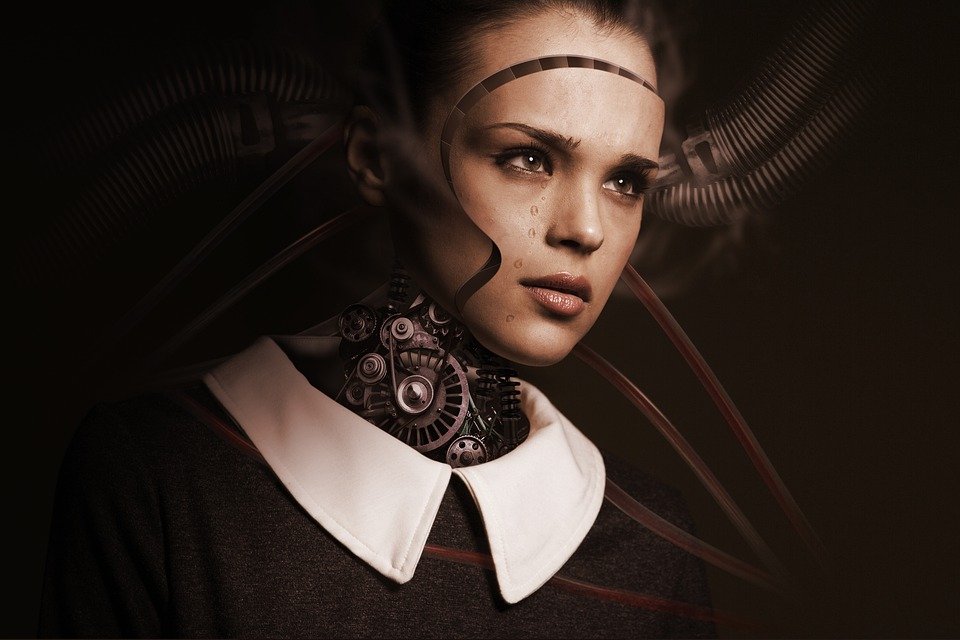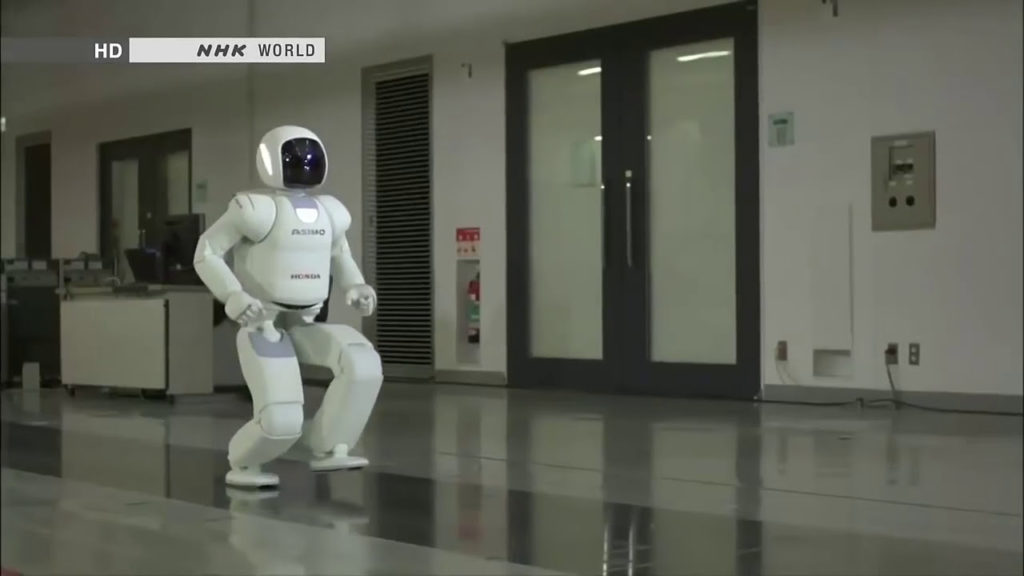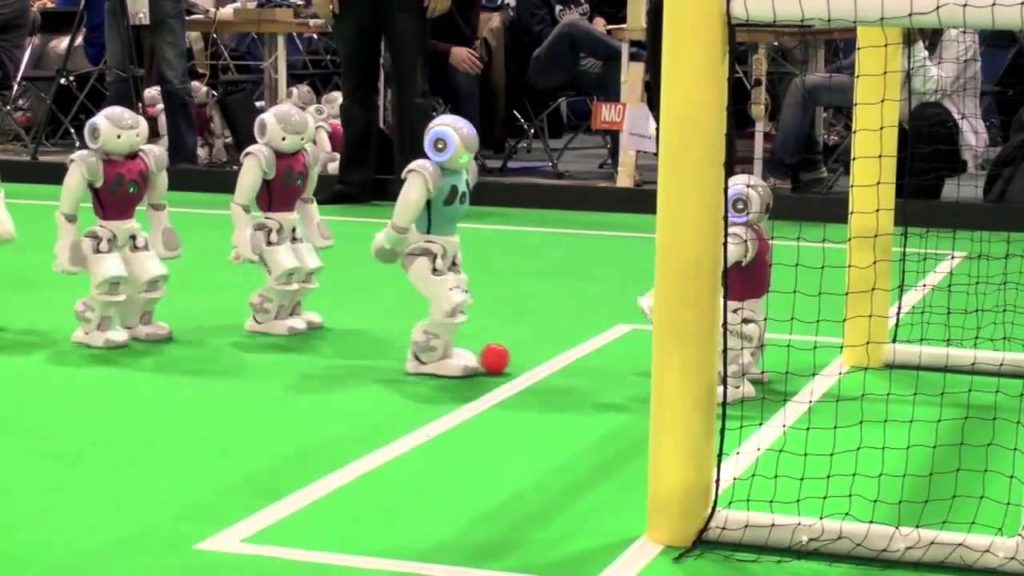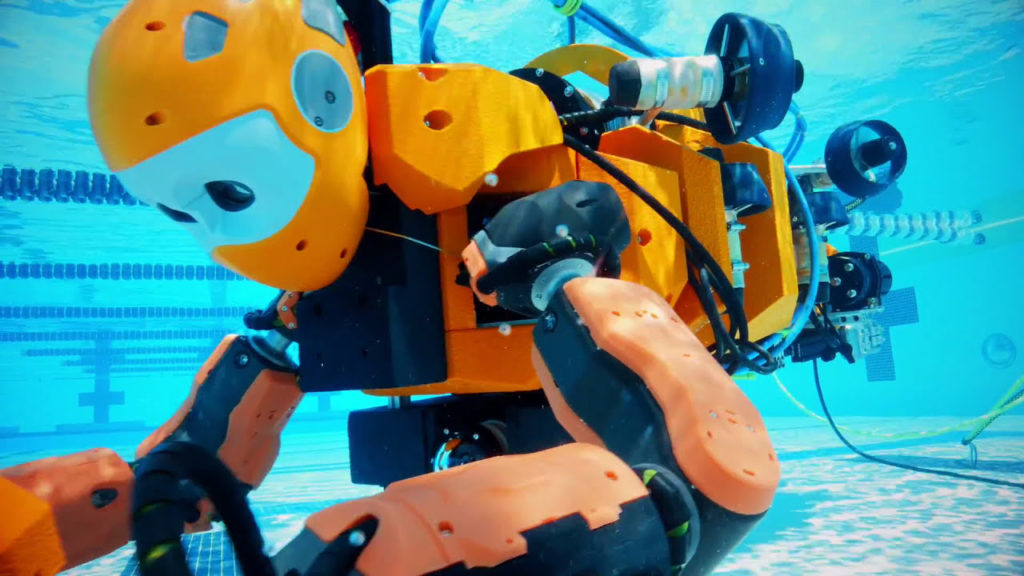For centuries, humans have been fascinated by the idea of artificial intelligence and robotics. In recent years, however, quantum leaps have been made in these fields, giving us a glimpse of what a future where humans and robots coexist might look like. This notion is the stuff modern-day science fiction is made of, and it has captured the imaginations of people all over the world. As our understanding of AI and robotics continues to grow, it is becoming increasingly clear that this future is not as far-fetched as it once seemed. With each passing day, we are one step closer to a world where humans and robots live side by side in harmony.

There are many types of humanoid robots, each with its unique features and purposes. Some are designed for industrial use, while others are made for consumers. Here is a breakdown of the most common types of humanoid robots and what they’re used for.
Table of Contents
What are Humanoid Robots?
Humanoid robots are a type of robot that is designed to resemble the human body. They can be used for a variety of purposes, including research, personal assistance, and even entertainment. Humanoid robots typically have two arms, two legs, and a head, and they are often equipped with sensors and cameras to help them interact with their environment. Some humanoid robots can even walk and run like humans.
Humanoid robots are still in development, and they are not yet widely available commercially. However, there are a few companies that make humanoid robots for research and industrial applications. Additionally, some hobbyist groups build their humanoid robots as well.
Benefits of Humanoid Robots
Increased efficiency in manufacturing and other industrial tasks
Humanoid robots are an increasingly common sight in factories and other industrial workplaces. These machines are designed to be more efficient than their human counterparts, able to work for longer hours without tiring and handle tasks that are too difficult or dangerous for humans.
While some people view the rise of the humanoid robot with suspicion, these machines have the potential to revolutionize the way we work and live. In the coming years, humanoid robots will become increasingly prevalent in society, ushering in a new era of efficiency and productivity.
Increased dexterity and flexibility compared to traditional robots
Humanoid robots are increasingly being used in a variety of settings, due to their increased dexterity and flexibility compared to traditional robots. This allows them to handle a wider range of tasks and to interact with their environment more naturally. For example, humanoid robots can be used in healthcare settings to assist with patient care or in manufacturing settings to operate machinery.
Additionally, humanoid robots are being developed for use in search and rescue missions, as they can navigate difficult terrain and enter small spaces. As humanoid robots continue to become more advanced, they will likely play an even greater role in our everyday lives.
More human-like interaction capabilities
Equipped with sensors and cameras, they can interact with their environment in a way that is more reminiscent of human behavior. This is thanks in large part to their ability to walk and run like humans.
This not only allows them to better blend in with society but also makes them better at performing tasks that may traditionally be performed by humans. As their abilities continue to increase, humanoid robots will likely become an increasingly common sight in our world.
Offer companionship to lonely or isolated people
Humanoid robots are increasingly being developed to provide companionship and emotional support to people who are lonely or isolated. These robots can offer a level of companionship that is similar to that of a human, and they can also help with tasks that are difficult for humans, such as caring for the elderly or disabled.
Humanoid robots can learn and understand human emotions, and they can use this knowledge to provide support and comfort to those who need it. In addition, humanoid robots can be programmed to carry out specific tasks, such as providing reminders or helping with activities of daily living.
As humanoid robots become more sophisticated, they will likely play an increasingly important role in providing care and support to those who need it.
What are the Challenges of Humanoid Robots?
Humanoid robots still face several challenges.
Humanoid robots are still in development
Just like any other type of robot, humanoid robots are still in development. This means that they are constantly evolving and becoming more sophisticated. Many challenges still need to be addressed, such as making them more durable and easier to operate. Additionally, researchers need to continue to work on improving artificial intelligence and robotics technology so that these robots can interact with their environment more naturally.
They can be expensive to build and maintain
One challenge that companies that produce humanoid robots face is the high cost of building and maintaining these robots. This is because they require sophisticated software and hardware. And they often require custom-made parts, which can be expensive.
Therefore, it is important for companies that produce humanoid robots to find ways to reduce costs and make them more affordable for consumers. One way to do this is to use off-the-shelf parts whenever possible.
Additionally, companies can work with suppliers to negotiate better prices for custom parts. By taking these steps, companies can help reduce the cost of humanoid robots and make them more affordable for consumers.
They are difficult to program and control
Humanoid robots require sophisticated software and hardware. AI and robotics technology is constantly evolving. As a result, it can be difficult to keep up with the latest advancements and ensure that humanoid robots can interact with their environment naturally.
Furthermore, humanoid robots often need to be programmed specifically for the task they need to perform. For example, if you want a humanoid robot to act as a personal assistant, you would need to program it specifically for that purpose. This can be time-consuming and difficult to do.
Operating humanoid robots can also be challenging. They often have many different parts that need to be controlled simultaneously. This can make them difficult to use, especially for people who are not familiar with robotics technology.
They are susceptible to damage from harsh environments or accidental impacts
Humanoid robots are often delicate and can be damaged easily. For example, they may be susceptible to water damage or damage from impact. This is because they often have many different parts that need to be protected.
Additionally, humanoid robots typically rely on sensors and cameras to interact with their environment. If these sensors or cameras get damaged, it can render the robot useless.
To prevent this type of damage, companies that produce humanoid robots need to take precautions to protect them from the elements and accidental impacts. For example, they can use waterproof materials and shock-absorbent materials in the construction of these robots. Additionally, they can add extra protection around sensitive parts such as sensors and cameras.
They may not be able to replicate human movement
Their dexterity can’t match human’s
Humanoid robots are often designed to resemble humans in their appearance and function. However, they may not be able to perfectly replicate human movement. This is because the way humans move is very complex and difficult to replicate.
As a result, humanoid robots may not be able to perform certain tasks that require precise human movement. For example, they may not be able to type on a keyboard or thread a needle.
This can limit their usefulness in some applications. However, as technology advances, it is likely that humanoid robots will become more sophisticated and will be able to perform more complex tasks.
Safety of using humanoid robots near people
While humanoid robots are designed to interact with humans, there is always the potential for accidents. For example, if a humanoid robot was not properly programmed, it could accidentally hit or hurt a person.
Humanoid robots often have sensors and cameras that help them interact with their environment. If these sensors or cameras malfunction, it could cause the robot to behave erratically. This could lead to accidents or injuries.
To prevent these types of accidents, companies that produce humanoid robots need to take precautions to ensure their safety. For example, they can add safety features such as emergency shut-off switches. Additionally, they can perform regular maintenance and safety checks on these robots.
Despite these challenges, humanoid robots hold a lot of promise for the future. As technology advances, these robots will likely become more widespread and affordable. Additionally, as we learn more about how to best utilize these robots, their capabilities are likely to increase as well.
Types of Humanoid Robots
3 common humanoid robot types
There are three main types of humanoid robots: industrial, research, and consumer.
- Industrial Humanoid Robots: Industrial humanoid robots are designed for use in manufacturing and other industrial tasks. They are typically more expensive than other types of humanoid robots and have more limited functionality. However, they are much more durable and can work for longer hours without tiring.
- Research Humanoid Robots: Research humanoid robots are designed for use in scientific research. They typically have more advanced features than industrial humanoid robots and are more expensive. However, they are not as durable and may not be able to work for as long hours.
- Consumer Humanoid Robots: Consumer humanoid robots are designed for personal use. They are typically less expensive than other types of humanoid robots and have more limited functionality. However, they are much more user-friendly and can be used for a variety of tasks, such as providing companionship or helping with household chores.
Examples of existing humanoid robots
There are a few different types of humanoid robots that have been developed over the years. Some of the most popular include:
- Asimo: Asimo is a humanoid robot created by Honda Motor Company. Asimo has many features that allow it to interact with people, including the ability to walk and run on two legs, recognize faces and voices, and even serve refreshments.

- NAO: NAO is a humanoid robot created by the French company Aldebaran Robotics. NAO is equipped with an array of sensors and cameras that allow it to perceive its environment and interact with people.

- Ocean One: For centuries, human beings have been fascinated by the mysteries of the sea. While we have made great strides in our ability to explore the depths of the ocean, there are still many areas that remain inaccessible to us. That is why the Stanford Robotics Lab set out to create Ocean One, a bimanual underwater humanoid robot that can reach depths that most human beings cannot.

- ATLAS: Developed by Boston Dynamics, ATLAS is a humanoid robot that is designed for search and rescue missions. ATLAS is equipped with sensors and cameras that allow it to navigate through difficult terrain and identify potential victims. It is called “the world’s most dynamic humanoid” by the maker.
- Sophia: Sophia is a humanoid robot created by Hanson Robotics. Sophia has the ability to communicate with people and show a range of emotions. In 2017, Sophia became a citizen of Saudi Arabia, making her the first robot to ever receive citizenship in any country.

